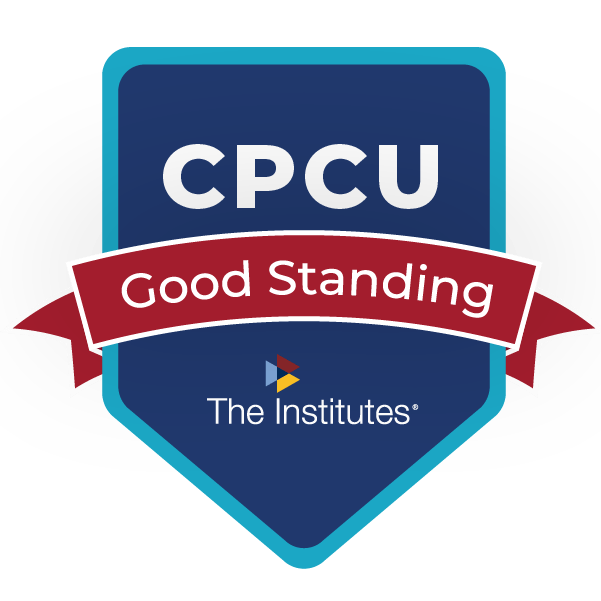Harvesting the Bull
August 23, 2018 – As the current stock market is busy toasting itself for the longest bull run in history, at least one chief investment officer is keeping his bubbly on ice while cautioning investors about a market he believes is on a “collision course with disaster.”
Guggenheim chief investment officer Scott Minerd sounded two dire warnings over the past four months:
 April 4, 2018 – “Guggenheim investment chief sees a recession and a 40% plunge in stocks ahead.”
April 4, 2018 – “Guggenheim investment chief sees a recession and a 40% plunge in stocks ahead.”
August 15, 2018 – “‘If there were ever a moment to harvest gains . . . it is August 2018,’ warns Guggenheim’s Minerd.”
Many of us not-so-fondly remember the last 40% drop in the stock market way back in 2009. Minerd wonders aloud if investors have become lulled into a false sense of complacency since then.
Recession? 40% plunge? Who’s got the stomach for that again?
Posted: August 23, 2018 | Category: Articles, Blog, Retirement, Structured Settlements | Comments Off on Harvesting the Bull
Dear Congress: This is Wrong!
August 6, 2018 – When the Tax Cuts and Jobs Act, as it’s known, went into effect earlier this year, many hailed the legislation for simplifying things and saving the average taxpayer money.
Others protested the legislation disproportionately benefits the ultra-wealthy who didn’t need and weren’t asking to have their taxes reduced.
Whichever side of the debate you happen to fall on, one category of taxpayers stands out as being most unfairly and adversely impacted by this legislation:
People who hire legal counsel for nonphysical injury claims.
That’s because, whether intentional or inadvertent, Congress failed to consider one disastrous consequence of the new law:
Posted: August 6, 2018 | Category: Articles, Blog, Retirement, Structured Settlements | Comments Off on Dear Congress: This is Wrong!
A Cure for the CD Blues
May 2, 2018 – Stored lovingly in the back of a closet in my house rests a box filled with vinyl record albums of (mostly) rock ‘n’ roll artists whose music I listened to growing up.
From The Allman Brothers Band to The Zombies, these Long Player, or LP, discs, once turntable-revolving staples of my high school, college and early professional career existence, now lie dormant, an undignified, coffined homage to my younger self.
 Compact discs, or CDs, offering digitally enhanced sound, emerged in the 1980s and became the preferred medium for most of the music-listening public for several decades, easily outlasting 8-track tapes which had a brief run.
Compact discs, or CDs, offering digitally enhanced sound, emerged in the 1980s and became the preferred medium for most of the music-listening public for several decades, easily outlasting 8-track tapes which had a brief run.
Now that streaming services have emerged, threatening to relegate CDs to the same passé status as the LPs they themselves supplanted a generation earlier, I am reluctantly making room in the closet for my CD collection even if I have yet to publish its obituary.
Non-Musical CDs
Certificates of Deposit (aka CDs – no relation to compact discs), offer investors a haven for funds they can afford to set aside for a period of time. Generally available at any FDIC-insured bank, they usually pay interest which is around 25 to 50 percent better than what’s available in a typical savings account, depending on the term.
Today’s available 3-year CD Rate = 2.80%
Individuals seeking the highest possible return with the lowest possible risk often choose CDs when they want to “live off the interest” and preserve their capital.
Even multi-million dollar trusts often have a CD component for the security portion of the assets under management.
What’s Better Than a CD?
No, not two CDs. Multi-Year Guaranteed Annuities. If you invest in CDs and never heard of MYGAs, you’ll want to learn about them. Especially if you are within a few years of or are already in retirement.
Today’s available 5-Year MYGA Rate = 3.80%
Multi-Year Guaranteed Annuities (MYGAs) work just like longer term CDs except you’re dealing with an insurance product (regulated by the state) instead of a bank offering (regulated by the Federal Government). You simply purchase a single premium fixed deferred annuity which guarantees a fixed rate of return through the maturity date.
The best part of MYGAs is that they pay roughly 33% more (5-year MYGAs) than bank CDs (which, remember, are already 25% to 50% better than savings rates).
Bonus MYGA Advantage: Whereas CD owners receive 1099-INTs each year for interest earned (unless held within a qualified retirement account), MYGA owners can roll funds over into the next year until maturity at which point all accumulated interest not previously withdrawn (along with original principal) becomes due and payable. Optionally, contracts can then automatically renew at prevailing rates or be rolled into another MYGA.
As with CDs, you forfeit some flexibility with MYGAs in exchange for the enhanced returns (penalties for early withdrawal are the same for both CDs and MYGAs) but by staggering maturity dates, some of the opportunity cost can be mitigated.
If your desire is to stash away some cash for a few years and get the best possible return with the least possible risk, MYGAs may be right for you.
Your ability to purchase a MYGA depends upon the source of your funds since different tax rules apply and not all funds will be eligible. Other factors to consider include age, suitability, minimum deposit requirements and risk tolerance but they’re certainly worth inquiring about if safety and principal protection are key objectives.
Just Put Those Old CDs On the Shelf
Whether funded using personal injury settlement proceeds or your retirement savings, MYGAs are an excellent choice for money that you can’t risk losing and won’t need until age 59½ or later. Often paying nearly a full percentage point more interest than CDs, it’s an easy choice for the CD-oriented crowd.
Within the broad range of structured settlement and retirement income options, Multi-Year Guaranteed Annuities can play a significant role as part of one’s overall financial plan for anyone desiring to safely set aside funds with specific target maturity dates of 3 to 10 years.
Now, if you’ll excuse me, I need to end this post because I feel this sudden urge to “. . . reminisce about the days of old with that old-time rock ‘n’ roll.”
(Even if I have to stream the music)
One final word of caution: DO NOT listen to those self-interested financial planners who say they hate annuities. Pull back the curtain to understand their feigned cynicism by reading one of my earlier blog posts: Great News for Annuities. You can thank me later when you didn’t lose any money.
CD photo courtesy of Giovanni Sades at FreeDigitalPhotos.net
Posted: May 2, 2018 | Category: Articles, Blog, Retirement, Structured Settlements | Comments Off on A Cure for the CD Blues
The Interest Rate Dance
 August 31, 2017 – Ever since the global financial near-apocalypse of 2009 caused everybody everywhere to rethink everything we thought we knew about money, saving, the market, investing, et cetera, I’ve noticed a pattern here in America. If you’ve been paying attention, you probably noticed it, too.
August 31, 2017 – Ever since the global financial near-apocalypse of 2009 caused everybody everywhere to rethink everything we thought we knew about money, saving, the market, investing, et cetera, I’ve noticed a pattern here in America. If you’ve been paying attention, you probably noticed it, too.
Once a year or more, we hear “they” are going to raise interest rates. They have to, right? Interest rates can’t stay depressed forever. Something’s got to give and we need to get back to normal, whatever that is.
So, the day of this big announcement arrives and everyone’s on pins and needles in anticipation of a big jump in rates that will make us all feel better. Then, at the prescribed hour, the keynote address is delivered ending with an ignoble “Ha, ha, made ya look” tease. Maybe rates go up a smidgen, or maybe they drop a whisker but usually, it’s just crickets. No change.
 In 2009 when I began circulating this chart on Historical Long-Term Interest Rates, a lot of people scoffed at the notion of interest rates remaining low for an extended number of years. I feel no profound sense of pride in being right almost a decade later but it was just too hard to ignore 135 years’ worth of data however painful it was to realize.
In 2009 when I began circulating this chart on Historical Long-Term Interest Rates, a lot of people scoffed at the notion of interest rates remaining low for an extended number of years. I feel no profound sense of pride in being right almost a decade later but it was just too hard to ignore 135 years’ worth of data however painful it was to realize.
Kiplinger even removes the mystery of their latest projection earlier this month with their unambiguously titled article, “Long Rates to Stay Low”.
Economists don’t get more straightforward than that.
There is no shortage of reasons interest rates are likely to remain at or near current levels for the foreseeable future, possibly for another quarter century. So, don’t be surprised if the next time “they” say interest rates are going to go up, nothing much happens.
Since nobody ever really knows what the future holds, it’s worth reminding clients that waiting comes with a cost. Structured settlements and retirement income annuities still make a great deal of sense for most people and will ALWAYS be in style. Why?
Because guaranteed future income has a good beat and you can dance to it.
Images courtesy of sattva and IceHawk33 at FreeDigitalPhotos.net
Posted: August 31, 2017 | Category: Articles, Blog, Retirement, Structured Settlements | Comments Off on The Interest Rate Dance
Future Income Balancing Act
August 21, 2017 – A lot of people pretend to know a lot about retirement income planning. But few are truly as knowledgeable on the subject as Dr. Wade Pfau, Professor of Retirement Income at The American College and retirement researcher extraordinaire.
Not only does he analyze retirement alternatives with the precision of a Swiss watchmaker, he willingly shares the results of his thorough research with others in an engaging style that simplifies a subject that can otherwise Wade (I couldn’t resist) into esoterica.
As one of his biggest fans and followers, I find his research refreshing in a world where far too often practitioners focus solely on one approach to financial planning to the exclusion of all other approaches or who try to over-simplify the process. If you, like me and most of our clients, are looking for insight into how to more thoughtfully plan for your own future, I highly suggest this blog post by Dr. Pfau where he asks quite non-rhetorically:
Which is Better for Retirement Income: Insurance or Investments?
 Like so much in life, balance matters when it comes to retirement income planning. People who drive cars that are out of alignment or subscribe to diets lacking variety often end up worse off for their planning failures or over-reliance on a single solution.
Like so much in life, balance matters when it comes to retirement income planning. People who drive cars that are out of alignment or subscribe to diets lacking variety often end up worse off for their planning failures or over-reliance on a single solution.
Why not be smarter?
Adopting a balanced approach to future income planning by understanding the benefits and risks associated with ALL the various methods advocated by knowledgeable professionals and then matching the strengths of each with your own future needs should lead you to your own retirement Zen.
Image courtesy of Stuart Miles at FreeDigitalPhotos.net
Posted: August 21, 2017 | Category: Articles, Blog, Retirement | Comments Off on Future Income Balancing Act
Managed or Mangled Money
April 20, 2017 – If you’ve had money in an actively managed large cap fund in the United States for the past five years, there’s an 88.40% chance your manager underperformed and you would have been better off in a simple, low expense S&P 500 indexed fund instead.
Would you board an airplane that only had an 11.70% chance of reaching its destination?
According to Spiva® Statistics & Reports, managers in the United States were particularly bad at coming out ahead when compared to the general market. Only in Chile were the fund managers less successful.
Remember when, nine years ago, Warren Buffett made a million-dollar bet that a simple, low cost, passively managed S&P 500 indexed fund would outperform an actively managed hedge fund? Absent something unimaginable happening over the next few months, the Berkshire Hathaway Chairman is poised to win his bet.
This report suggests Mr. Buffett knew what his odds were.
Injured Plaintiff Beware
For the past 25 years, I have helped thousands of individuals make decisions totaling hundreds of millions of dollars from $10,000 dog bite injuries to quadriplegics receiving jury verdicts and negotiated settlements totaling more than eight figures and everything in between. For most, dedicating a sizable portion of their settlement toward a structured settlement allows them and their families to move forward from their accident and live their lives with dignity and financial, if not always physical, peace of mind.
But somewhere along the way, a push from the fund management community managed to ingratiate themselves into the plaintiff bar and convinced them, the judges who approve certain settlements and plaintiffs themselves that a managed money fund (with high taxes, fees, and costs) held more promise than a structured settlement to benefit someone whose future has been compromised.
Not all settlement planners, trust attorneys and fund managers touting these managed fund options are intentionally leading their clients to a potentially more insecure future. But with data like those linked in this post, odds of a more positive outcome just don’t seem to be in their favor.
Structured settlements on the other hand, while perhaps too straightforward for some and somewhat boring by comparison, provide safety, certainty and tax advantages not easily replicated by ANY managed fund.
S&P 500 Linked Option
 Fortunately for plaintiffs anticipating personal injury proceeds, the attorneys who represent them AND those with retirement accounts wondering how to best take advantage of the market upswings without the downside risk, there are annuity options available with a market component. A shield, if you will, against market loss.
Fortunately for plaintiffs anticipating personal injury proceeds, the attorneys who represent them AND those with retirement accounts wondering how to best take advantage of the market upswings without the downside risk, there are annuity options available with a market component. A shield, if you will, against market loss.
Fixed Indexed Annuities are available in most states for those with savings and retirement accounts which allow them to invest their money which increases, subject to a cap, when a chosen index increases yet remains neutral when the market declines before ultimately converting it to cash flow they can never outlive.
For those anticipating personal injury settlement proceeds and the contingency fee-based attorneys who represent them, such an option exists with even more distinct tax advantages. Pacific Life introduced its Index-Linked Annuity Payment Adjustment Rider (ILAPA) for those settling injury claims three years ago and it continues to grow in popularity as the market performs well and familiarity increases. All future income is 100% tax-free to the plaintiff while any structured attorney fees are tax-deferred if established properly.
I’m sure there is contrarian data one could point to saying all this research is flawed and actively managed funds do perform better than the attached report suggest. But you know what? I’m not willing to bet too much of my own money on it given these poor odds.
If your injury settlement money or retirement savings represents everything you’re relying on for your future, common sense suggests not taking risks you can’t afford to take and you, too, would be wise to weigh your options carefully. For most, a balanced approach will yield (pun intended) the best outcome.
Image courtesy of Sira Anamwong at FreeDigitalPhotos.net
Posted: April 20, 2017 | Category: Articles, Blog, Retirement, Structured Settlements | Comments Off on Managed or Mangled Money
California DOI Press Release on Annuities
April 18, 2017 – Earlier this month during National Retirement Planning Week, the California Department of Insurance issued a Press Release urging Californians to “plan for retirement and carefully consider annuities.”
This statement serves as a timely reminder that annuities offer many benefits that simply cannot be matched by traditional retirement investing approaches and often go overlooked by those who continue to focus on asset accumulation in the years leading up to and during retirement.
The newsworthy announcement includes some excellent information and links, including cautions and warnings, designed to help people understand the law and to make the most informed decisions possible about their own financial futures.
Pensions, once a staple of retirement income security for the American workforce, have all but disappeared completely over the past few decades forcing workers to rely on their own skills to ensure they don’t run out of money once their working years come to an end.
Left to their own devices, most people fail to appreciate the statistical probability that any retirement funds they’re able to successfully accumulate during their working life could become fully depleted before they die leaving them dependent upon others for care.
Only annuities can provide guaranteed income for life.
Period!
Annuity guarantees are subject to the financial strength of the life company, naturally, but because life companies pool the mortality risk of large numbers of people, they’re able to help individuals achieve the goal of lifetime income in a fashion that somebody relying on traditional investing methods cannot.
 Retirement income planning doesn’t happen by itself and it’s not a particularly fun exercise. But it’s a necessary step for those seeking to make the transition from working to the next phase of life and can be made much easier by dedicating some portion of their portfolio toward life income annuities.
Retirement income planning doesn’t happen by itself and it’s not a particularly fun exercise. But it’s a necessary step for those seeking to make the transition from working to the next phase of life and can be made much easier by dedicating some portion of their portfolio toward life income annuities.
And sooner is usually better than later.
Just like any purchase, consumers need to educate themselves on the pros and cons of ANY type of retirement income strategy and this California Department of Insurance press release is a good first stop.
We invite you to also check out the rest of our Retirement Income Blog for additional educational information and hope it helps you with your planning.
Image courtesy of Stuart Miles at FreeDigitalPhotos.net
Posted: April 18, 2017 | Category: Articles, Blog, Retirement | Comments Off on California DOI Press Release on Annuities
The S&P 500 by Presidents
January 20, 2017 – On Inauguration Day, here’s a little financial food for thought as you contemplate your own financial future and the decisions you’ll be making over the next few years.
Twelve of the last fourteen presidents served at least one full term in office (Kennedy and Ford did not).
As measured purely by the S&P 500 returns during each’s first full term in office, which presidents were the most and least economically successful?
Give up?
Here they are ranked with the percentage return from Inauguration Day to Inauguration Day shown in parentheses:
Roosevelt (206.3%)
Obama (81.4%)
Clinton (79.2%)
Eisenhower (69.5%)
George H.W. Bush (47.5%)
Reagan (38.7%)
Johnson (28.4%)
Carter (27.0%)
Nixon (12.6%)
Truman (-0.7%)
George W. Bush (-13.5%)
Hoover (-77.1%)
There are many more ways to measure economic success than the S&P 500 and, to be fair, there’s a lot more driving the engine than simply who happens to be sitting in the Oval Office when economic activity occurs.
But it’s interesting to look back, with the benefit of hindsight, to see how the market responded to different administrations.
More Financial Food
When you consider that during 27 out of the last 88 years (31%), the S&P 500 has yielded a negative annualized return, it’s worth considering where you are in life so you can choose the appropriate risk profile for your own unique situation.
Are you in your 20s or early 30s? Go ahead. Stick some money in the stock market, ride out the highs and lows for 20-40 years and you will probably be rewarded.
But if you’re within 10 years of retirement, banking your entire future on the market can lead to untold misery if your timing happens to be bad or you are living during one of the down year presidential terms.
Nobody has a crystal ball but a sensible retirement or post-settlement income strategy includes locking up some of your future with guaranteed income that fixed income or structured settlement annuities provide.
Some years are up. Some years are down. Choosing a slower, steadier upward path might not be terribly exciting. But the predictability that comes with fixed annuities can certainly make your life less stressful.

Posted: January 20, 2017 | Category: Articles, Blog, Retirement, Structured Settlements | Comments Off on The S&P 500 by Presidents
Outliving Your Retirement
August 23, 2016 – They call it “The Longevity Paradox” – People recognize they’re living longer but don’t seem to be taking the necessary steps to ensure long life financial security.
A few staggering facts from yesterday’s InvestmentNews article of the same name:
There are 44% more American centenarians today (77,197) than there were a decade ago.
That number is expected to grow to more than a million by 2050.
Remember when people living to age 100 was so rare it used to make the newspapers? (Heck, remember newspapers?)
Increased longevity probability is good news for those who are healthy and have the resources to enjoy their long life. But too many don’t or won’t for a variety of reasons.
Managing one’s longevity risk while simultaneously matching financial assets needed to meet uncertain and often-changing future needs is an impossible task at best.
Make Mine Insurance, Please
Fortunately, life insurance companies are in the business of managing large scale mortality risk and efficiently matching future dollars to the future needs of those who live long lives.
They can do for you what is nearly impossible for you to do on your own:
Guarantee income for life!
Here’s a nice little six minute video from WealthTrack featuring New York Life’s Chris Blunt and Kiplinger’s Personal Finance‘s Kim Lankford making the point far more eloquently than I could.
Annuities are like gravity. They work whether you believe in them or not.
About a year ago, we told you about a working paper which did an excellent job comparing and contrasting retirement income strategies. Here’s the link if you missed it the first time. Worth revisiting.
 So if you need your retirement tree to provide enough cash to last your entire lifetime, a life annuity is your best choice.
So if you need your retirement tree to provide enough cash to last your entire lifetime, a life annuity is your best choice.
By the way, balance is the key. Only rarely does it make sense to put all your retirement funds into an annuity basket. Likewise, only rarely does it make sense to NEVER put any of your retirement funds into an annuity.
Just make sure you sprinkle at least some annuity fertilizer on your retirement tree to ensure a healthy retirement.
L’chaim!
Posted: August 23, 2016 | Category: Articles, Blog, Retirement | Comments Off on Outliving Your Retirement
Major Milestone Surpassed
July 29, 2016 – In March of 2009, in the depths of the Great Recession, I launched the Finn Financial Group with a pledge to help clients achieve maximum financial success and security through the effective use of structured settlements and related specialty products and services.
Pretty dumb of me, right? I mean, who starts any kind of financial business when the financial world is collapsing?
But it is precisely because people lost fortunes that I knew a market would always exist for individuals desiring to incorporate guaranteed future income for themselves and their loved ones into their overall financial planning strategy.
Since that time, our firm has helped hundreds of people in dozens of ways but recently, we eclipsed a major milestone that really humbles us:
$100,000,000.00
That’s how many dollars worth of structured settlement and guaranteed income annuity contracts we’ve placed since our firm’s founding seven short years ago.
While the total dollars is indeed substantial, it’s what these dollars represent that matters most:
They represent financial security for children whose parents were killed in automobile accidents.
They represent college funding and future scar revision for children bitten by a dog or hit by a car.
They represent a safety net for someone injured on the job who can no longer work.
They represent restored dignity for someone released from prison for a crime they did not commit.
They represent common sense tax deferral for someone selling a business or investment property.
They represent retirement income for attorneys who often are so busy they fail to address their own future post-career security needs.
They represent peace of mind for soon-to-be retirees who choose to dedicate a portion of their retirement funds to guaranteed cash flow they can never outlive.
One hundred million dollars worth of trust and confidence from hundreds of clients across the country reassures me that I made the right choice when founding this firm.
I’m proud of the role I’ve played in helping people secure their futures, many of whom will continue benefiting from the plans we worked out together long after I’m gone.
So, to all our clients whose demonstrated trust enables us to continue our mission of helping people who require knowledgeable guidance when they are making some of the most important decisions of their lives we extend a heartfelt
“THANK YOU” for the opportunity to be of service!
Posted: July 29, 2016 | Category: Articles, Blog, Retirement, Structured Settlements | Comments Off on Major Milestone Surpassed




















